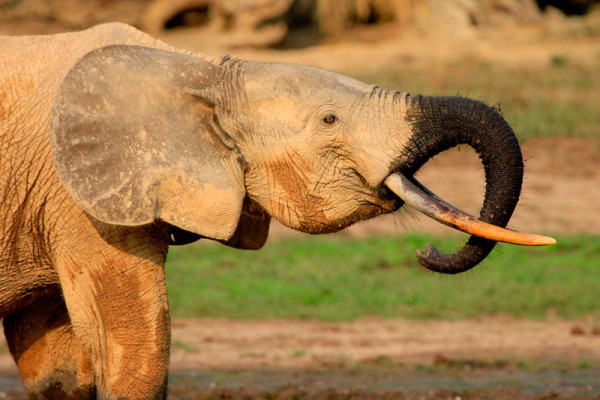Field reports indicate slaughter of elephants, conservation staff evacuated
The world learned more terrible news about elephants again last week: more forest elephants are being slaughtered near the Dzanga-Sangha protected areas, in violence-ridden Central African Republic (CAR). This follows the shocking news from a recent study that found that poaching of forest elephants for their ivory has reduced their population in the Congo Basin by 62% over the past decade.
In my last blog (Recent rhino killing in India reminds us of ongoing and serious threats from poaching) I wrote about my travels through Tanzania, Rwanda and Burundi back in 1982 and my shock when I arrived in Africa and learned that that most of the black rhinos were long gone. Another surprise for me on that trip was how much elephant ivory was available for sale in Tanzania—it was literally everywhere and it was cheap. At the time the African elephant was listed on Appendix II of the Convention on International Trade in Endangered Species of Wild Fauna and Flora (CITES). That meant that international trade in African elephant ivory was legal, as long as it was traded with valid CITES export permits. But back in those days very few people knew what CITES was and most governments were not enforcing it well. When I spoke with the carvers that were selling elephant ivory in Tanzania, they often knew that elephants were listed by CITES and would give ready advice as to how to get carvings through customs without permits. Illegal trade was common, and poaching was a big problem.
The poaching of elephants in Africa continued in the 1980s, and by 1988—when I first started identifying wildlife products for CITES enforcement—elephant ivory was one of the most common items being detained by Canada Customs.
Then in 1990, in response to the growing problem of elephant poaching and illegal ivory trade, the member countries of CITES voted to list the African elephant on CITES Appendix I. That meant that commercial trade in elephant ivory was no longer permitted. This decision was widely reported in the media and the impact on the international ivory market was immediate: the prices plummeted and international trade rapidly declined. Best of all, the poaching of elephants dropped significantly. Many people, myself included, thought the problem had been resolved and that poaching would no longer be a major threat to elephants in Africa.
We were terribly wrong. In the past ten years the poaching of elephants in Central Africa has skyrocketed. Sadly, the market for elephant ivory never completely went away and heavily armed insurgent groups, organized crime, and corrupt authorities have joined to profit from poaching and illegal trade. This is a disastrous situation which may well drive the Central African forest elephant to extinction.
The only good news I have to report is that a lot of people, in a lot of countries are working incredibly hard to stop poaching of elephants and illegal trade in elephant ivory. These are critical global priorities for WWF and TRAFFIC. We have to succeed, the survival of the forest elephant has to be secured. The alternative is unthinkable and unacceptable.


